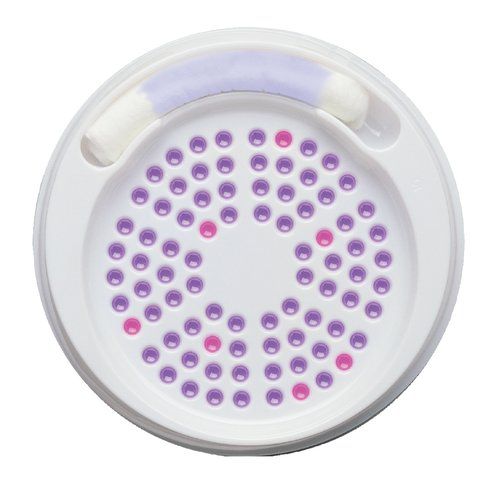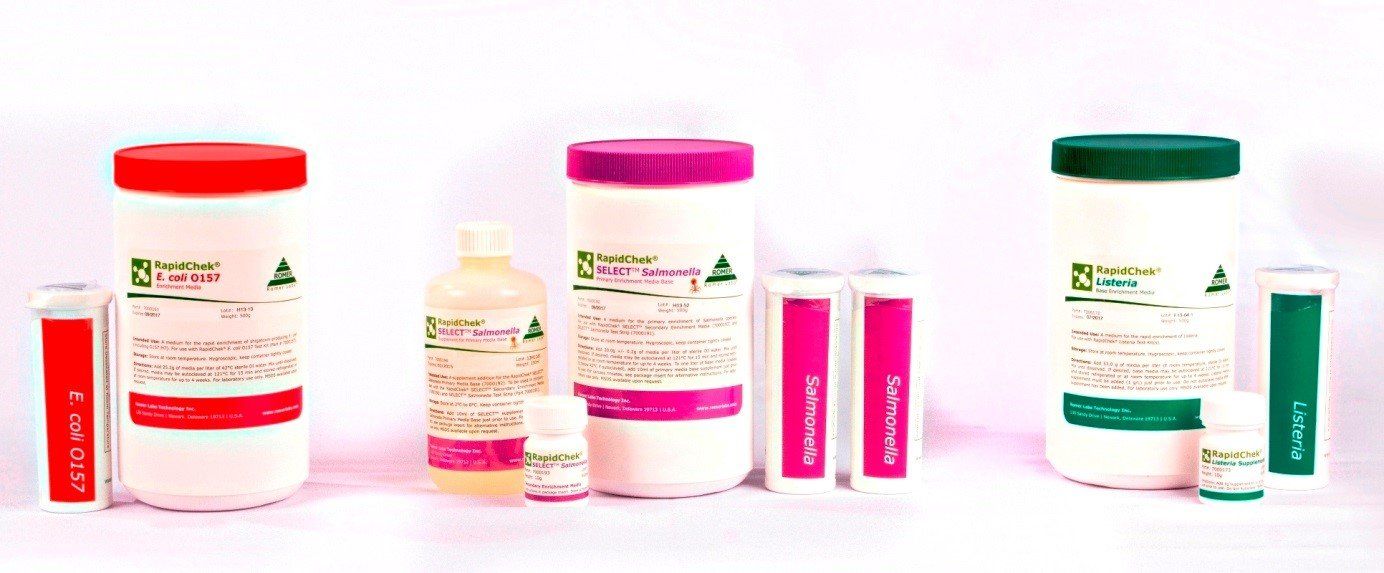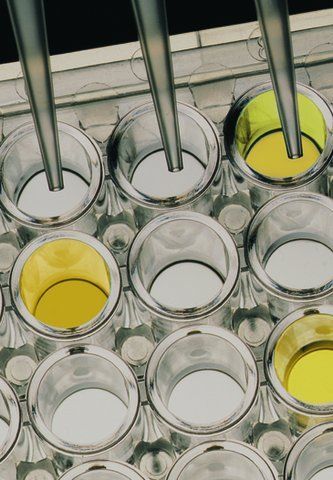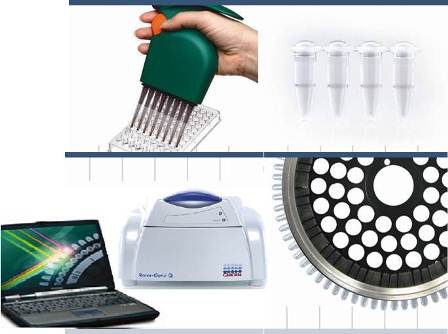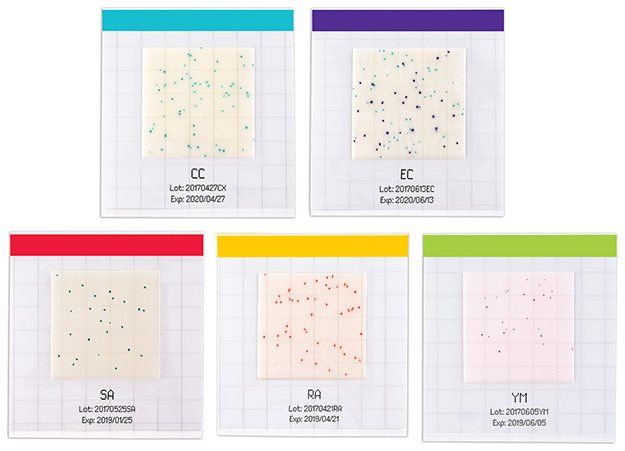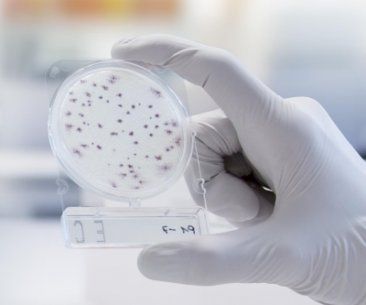RAPID MICROBIOLOGY TESTING
Rapid Microbiology
In microbiology for food industries and pharmaceutical factories it often needed to find if a specific pathogen is in a given sample of product. Traditionally a culture media is used whereby nutrients is supplied to the microbes in a petri dish together with chemicals to suppress the non-target organism. This has been deemed the gold standard. However, the preparation of these agar plates is tedious and the time to results is often long. Therefore, for fast and accurate confirmation of the presence of these pathogens, Arasains Indonesia supplies various rapid microbiology detection based on several methods, such as immunochromatographic lateral flow test, enzyme-linked immunosorbent assay (ELISA) and PCR. Besides those methods, we also provide advanced counting methods allowing simple and faster enumeration for quality indicators and detection for pathogens.
SimPlate®
Merck Biocontrol Indonesia supplies the SimPlate®, Binary Detection Technology for the detection of key groups of bacteria. The proprietary media provides nutrient to the target bacteria in microwells and allow better recoveries than conventional media. Defined substrates are incorporated into the media to detect enzymatic and redox reactions that are related to the target organisms to produce a color or fluorescent signal in the media thus providing easy to read results and easy accurate counting. Because SimPlate® depend on these reactions rather than conventional growth of colonies, the results are available in days faster than conventional methods. Whilst other testing methods require duplicate plating and the standard MPN method requires multiple dilutions up to nine tubes, SimPlate® has been validated to produce equivalent results with just one plate.
Benefits:
- Fast time to results allowing to address problem areas quickly
- Easy to interpret eliminates the variability between different analysts
- Less interference eliminating the effects of swarming microorganism, enhance accuracy
- Works with challenging food matrices
- Large counting range, up to 738 CFU allowing fewer dilutions
- Major tests have validation, AOAC OMA or PTM
- Single plate results (no need duplication)
- Storage: 2 – 30oC
Parameters:
Total plate count, yeast and mold, coliform and
E. coli, Enterobacteriaceae and Campylobacter.
Lateral Flow Technology - RapidChek®
Arasains supplies RapidChek® from Romer Labs Indonesia. The RapidChek® product lines were developed to deliver the simplicity, speed and high accuracy necessary in everyday pathogen testing without the need for expensive equipment or extensive training. The RapidChek® product family utilizes highly selective enrichment media coupled to advanced and highly specific lateral flow immunochemical detection of food pathogens such in various foodstuffs and environmental applications.
Benefits:
- Fast time to results and simple procedure
- Reliable results
- Easy resource management
- Approved by AOAC OMA and RI
Parameters:
Salmonella, Listeria spp., Listeria monocytogenes, E. coli 0157 and Campylobacter.
Lateral Flow Technology - VIP® Gold
VIP® Gold by Merck Biocontrol Indonesia based on lateral flow immunoassay method is applied to detect pathogens in food and environmental samples. When added to the lateral flow device, samples are combined with gold colloid particles coated with capture antibodies specific to the target pathogen. The solution then drawn across a nitrocellulose membrane via capillary action. If the target antigen is present, it is captured and bond to colored particles making a visual evaluation. Each VIP gold lateral flow device is a self-contained device and thus requires only the addition of sample to a well making work flow extremely convenient.
Benefits:
- Advanced Technology
- Fast presumptive screening and easy detection after enrichment steps
- Improved lab efficiency by an innovative multi-test format with break-away devices
- No skills and no automation required.
- AOAC OMA approval
Parameters:
Salmonella, Listeria spp. and E. coli 0157.
Detection of Pathogen in Microtiter Plate - TRANSIA™PLATE
Merck Biocontrol Indonesia supplies TRANSIA™PLATE for the rapid detection of pathogenic bacteria. The microtiter plates use enzyme linked immunoassay sandwich technology for identification. The plates are coated with highly specific antibodies and bind to specific antigens on the target organism. A detection mechanism of another antibody linked with a color producing conjugate enzyme makes the final reading either by eye or read with a reader. The Gemini reader provides walk away automation for the Elisa development and reading process making high volume testing a breeze. The tests have validations such as AOAC and AFNOR.
Benefits:
- Accurate and reliable
- High throughput efficiency – 96 well microtiter plate format
- Increase Productivity with Automation
Parameters:
Salmonella, Listeria spp., Listeria monocytogenes and E. coli 0157:H7.
Detection Microbiology using PCR Technology - SureFast® Microbiology
R-Biopharm Indonesia developed microbiology detection based on DNA detection using real-time PCR, SureFast® Microbiology. This technology is used for screening and species identification. The qualitative detection. SureFast® Microbiology allowing microbiology testing provides high sensitivity, rapidness, good repeatability and reliability of results that is important for immediate and long-term decisions. Several brands of real-time PCR were already validated.
Benefits:
- Reliable result with internal control for each detection
- Flexible – open platform
- Effective DNA/RNA extraction
- Increased efficiency - multiplex real time kits
Parameters:
Salmonella, Listeria spp. Listeria monocytogenes, Cronobacter sakazakii, Campylobacter, Bacillus cereus, E. coli, Clostridium, Staphylococcus, Vibrio Yersinia.
Detection Microbiology using PCR Technology - Assurance® GDS
Assurance® GDS (Genetic Detection System) provides the fastest detection technology combined with highest specificity by using molecular detection combined with food microbiology. Merck Biocontrol Indonesia uses multi layers of specificity including immunomagnetic separation, highly specific primers and a patented probe system for superior detection. This ensures highly accurate results. The tests have validations such as AOAC, Health Canada, AFNOR/MICROVAL.
Features and Benefits:
- PickPen IMS (immunomagnetic separation) preparation
Improves accuracy by capturing and concentrating target pathogens instead of using dilution (1st level of specificity).
- Superior proprietary reagents
Use of both primers and probes to add 2 levels of additional specificity. The internal control in every reaction tube promotes reliable results. Then, the ready to use PCR reagents in pellet form inside each reaction tube enhance the consistency and stability.
- Multiplexing DNA amplification
Multiplexing platform allowing the simultaneous detection of multiple targets within each amplification tube.
- Rotary Formats Thermal Cycler
Faster cycling with evenly heat transfer produce consistent and reproducibility results.
Parameters:
Salmonella, Listeria spp. Listeria monocytogenes, Cronobacter, E. coli 0157:H7 and STEC.
MC-Media Pad®
Merck Indonesia supplies MC- Media Pad® for convenient and rapid routine testing of microbial contaminations. The pads are coated with growth medium and chromogenic substrates for specific detection allowing faster results and improved readout. When the sample is applied, the liquid spreads evenly on the pad by capillary action. No additional working steps, improving the workflow, reducing the risk of contamination. The transparent cover film can be easily opened and closed with one hand, and the color coding ensures that you can always pick the right one at a glance.
Benefits:
- Ready to use
- Easy to use and accurate
- Save space in your fridge and incubator
- Go green & gain: reduce your environmental impact
- Improve your inventory management with shelf life of up to 15 months
- Comply with regulations, AOAC approval
- Can be used for product analysis, direct stamping, air sampling and membrane filtration.
Parameters:
Aerobic count, yeast and molds, coliform, coliform and E. coli, and Staphylococcus aureus.
Compact Dry
Arasains supplies Compact Dry from R-Biopharm Indonesia. Compact Dry plates contain a dry gelling agent, modified standard media and chromogenic substances, ease up identification and enumeration. The plates can be used to test raw materials as well as finished products like various foods, beverages, cosmetics, and water. It is also suitable for hygiene monitoring of surfaces using a wet swab system.
Benefits:
- Ready to use
- No change in handling
- No additional tools and equipment
- Reliable results, easy to read and count
- Several official validated parameters
- Suitable for food samples, liquids and surface swabs
- Easy to store at room temperature
Parameters:
Total count, yeast and molds, Enterobacteriaceae, enterococci, coliform, E. coli and coliform, Salmonella, Listeria, Staphylococcus aureus, Bacillus cereus, Vibrio parahaemolyticus, Pseudomonas aeruginosa and heterotrophic water bacteria.




